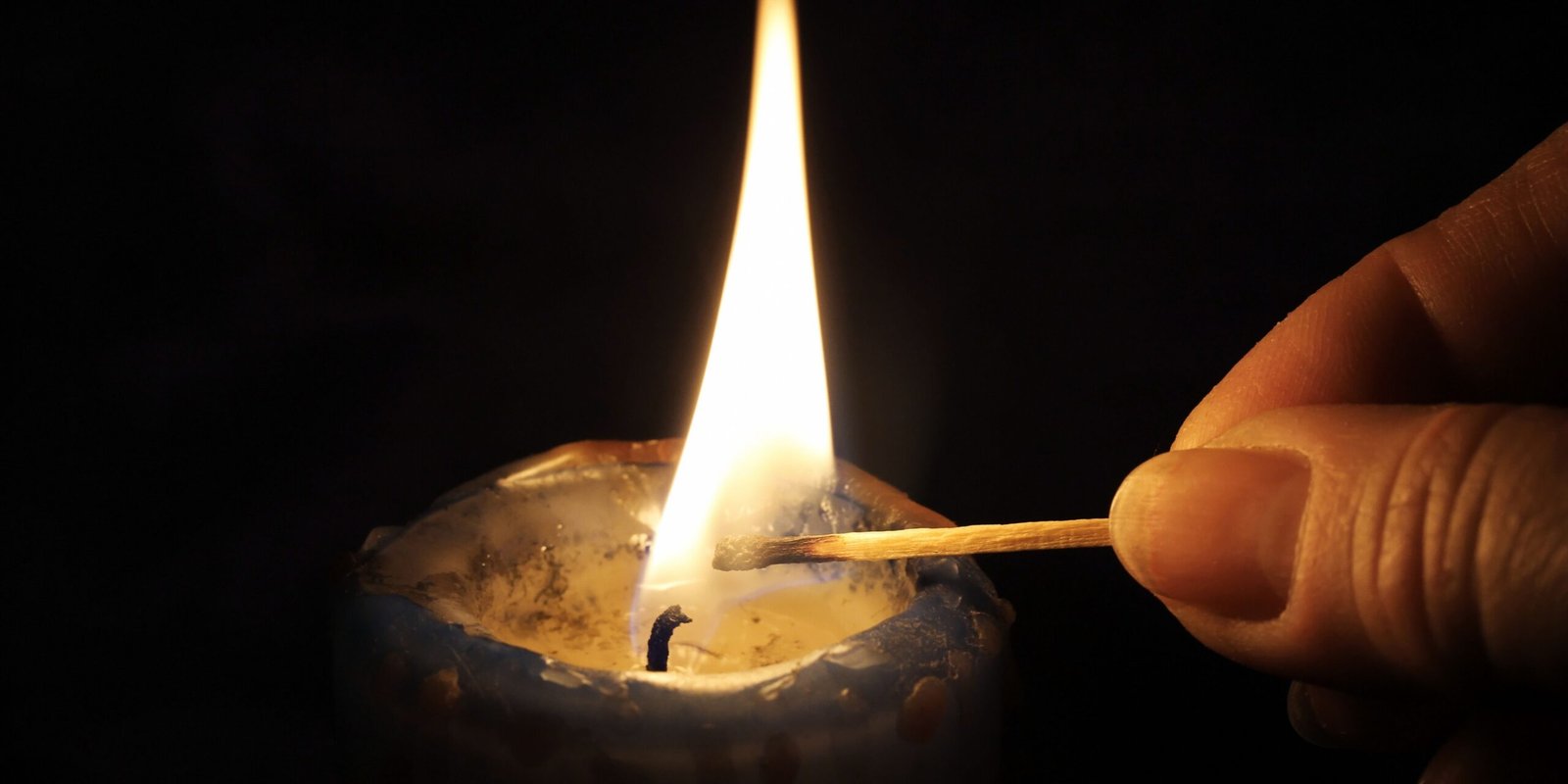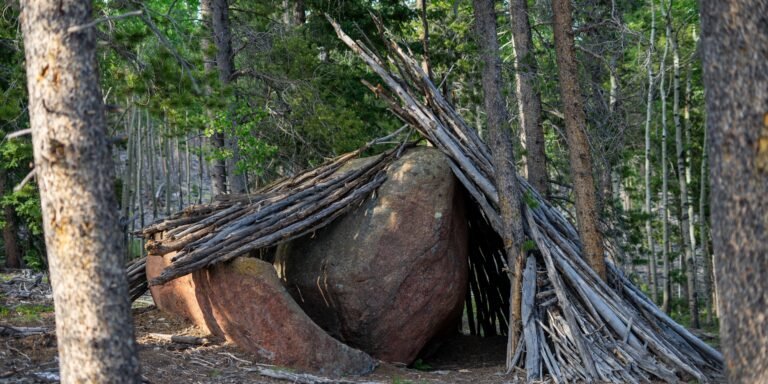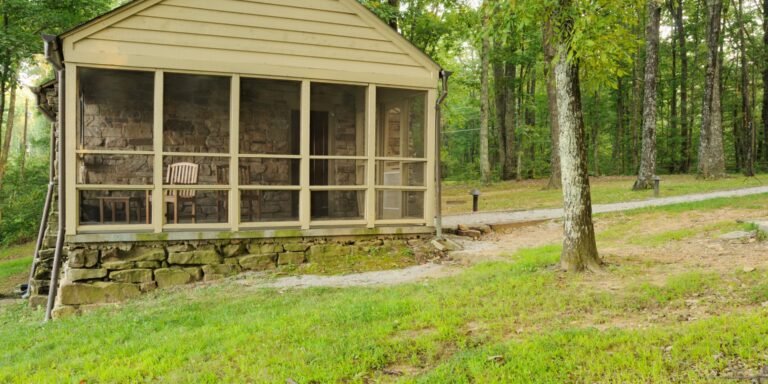How To Make Emergency Candles At Home
This post may contain affiliate links, full disclosure here.
When the power goes out, you’re having a calm night at home. You need to conserve the battery in your flashlight, but you don’t have any professional-grade emergency candles on hand. You’d be set if you understood a few different strategies for swiftly manufacturing DIY emergency candles.
Knowing a few inventive ways to offer light to your family during a long-term emergency situation can be a lifesaver. After all, we are all far more exposed than we may believe to severe disasters. Even if you keep candles on hand in case of an emergency, you’ll ultimately run out and need something else.
Best Homemade Emergency Candles
| Name | Burn Time | Materials Needed |
|---|---|---|
| The Crayon Candle | 2-3 Hours | Crayon |
| The Tin Can Candle | Varies | Cardboard, aluminum can |
| The Butter Candle | 4 Hours | Butter, toilet paper |
| The Vaseline Candle | Varies | Vaseline, paper |
| The Orange Peel Candle | 6-8 Hours | Orange, olive oil |
| The 100 Hour Candle | 100 Hours | Crisco shortening, taper candle, mason jar |
Making A Crayon Candle
If you have children, you’ve probably experienced the frustration of looking for a pen or pencil and only finding crayons. Fortunately, having practice finding crayons isn’t completely worthless when you’re in need of emergency lighting. A crayon is the polar opposite of a store-bought candle!
You have the paper wick around the outside with wax in the middle, rather than the wick in the center with wax around the outside! The beauty of a crayon candle is that it requires very little preparation. Crayons are almost ready-to-light candles!
- At the top of the wrapper, cut the crayon’s tip-off. It should now be nothing more than a stick of wax in a paper wrapper.
- Hold a flame over the crayon’s top. A single crayon will burn for around fifteen minutes after the wrapper catches.
Tip: Heat the bottom of the crayon and put it down against a hard surface to keep it upright while it burns (like a dinner plate). The wax at the bottom will squeeze out, resulting in a fantastic candle stand! Most crayons include a bottom section where the wrapping ends and there is only wax for approximately a quarter-inch or so.
Tin Can Candle
This type of homemade candle produces a lot of light and may be used as a compact stove or even a space heater to warm up a small space. This is an excellent type of candle to know how to create if you live somewhere with really chilly winters. In the thick of winter, it might keep your family warm.
The only catch is that you’ll need a wax supply to make these. Consider purchasing a bucket of bulk wax to keep on hand in case of an emergency. If that isn’t an option, melted crayons or fragments of discarded candles can be utilized instead.
- Cut lengthy strips of corrugated cardboard about the same thickness as the can’s height.
- Inside a tin can, preferably a flat tuna can, coil the cardboard pieces tightly.
- Over the cardboard, pour melted wax.
- This will be the wick, so take another little strip of cardboard and slide it into the middle of the coiled cardboard. Light the cardboard “wick” so that it sets the rest of the candle ablaze.
These candles have a huge flame that produces a lot of heat while emitting very little smoke. As a result, they’re best employed as a tiny stove or heater.
Butter Candle
These candles are easy to create and will last around four hours! All you’ll need is a stick of butter and some toilet paper for the wick. This will produce a little flame similar to that of a store-bought candle.
- To make two separate two-ounce squares, cut a regular four-ounce stick of butter in half.
- Using a toilet paper square, cut it into quarters. One of these quarters will be used as the candle’s wick, folded diagonally and twisted into a strand. Make a fishhook form by folding some of it over on itself. Make sure the wick is a quarter-inch longer than the height of the butter.
- Using a thin instrument such as a skewer or toothpick, poke a hole in the center of the butter.
- By using the hook, push the wick into the hole.
- Light your candle by rolling the exposed section of the wick in the butter.
Vaseline Candle
Vaseline makes one of the brightest flames I’ve ever seen in a candle. Although the guy in this video used the original Vaseline container, you may need to use a different container if yours isn’t fire-safe. The amount of Vaseline you use will determine how long it burns.
Vaseline is an excellent item to keep on hand in case of an emergency. It can be used in a million different ways!
- Roll a sheet of paper into a thin wick about a quarter-inch longer than the Vaseline container’s height.
- Dip the end of your new paper wick in Vaseline so that it is completely covered in Vaseline. Then flip it over and place it in the center of the Vaseline bottle to light it.
Orange Peel Candle
You may make a little tealight-style candle with just an orange (or any other citrus fruit) and some oil if you need one. It takes a little care to put these together, but once done, they will endure a long time.
Unlike the other candles on this list, which use wax or petroleum jelly to burn, this one uses olive oil! That means you may top up the oil when it runs out to extend its life. You won’t be able to keep adding oil continuously because the wick won’t last forever.
- Cut around the orange’s perimeter, only cutting through the peel and not the fruit.
- Remove the peel off the bottom half of the orange with care, including the pith (long white section). It should look like a white stem sticking straight up from the inside bottom of the peal you just removed if it’s still attached.
- Fill the small orange peel dish halfway with olive oil, soaking the pith in the process. Allow it to soak for a few minutes before lighting the pith as a wick.
It’s worth noting that getting the pith to light can be tricky at first. This is very normal. Putting a flame on it for around 30 seconds should do the trick.
Crisco Candle
- The shortening should be packed into the mason jar to a height of about one inch less than the height of the taper candle. Make sure there are no air bubbles while packing the shortening in.
- Place your taper candle in the center of the shortening and push it all the way down to the bottom. Light it up and have fun!
You could melt the shortening if you want a more visually appealing finish and a better approach to ensure there are no air bubbles in the shortening at the same time. Simply heat it until it’s liquid in a pot and pour it into the mason jar. Push your taper candle in once it cools and hardens, and you’re done!
How Make A Wick
Surviving an emergency requires imaginative problem-solving, and candle-making provides plenty of opportunities for that. A candle can only be made with two components: the wick and the wax. The following items can be used to make candle wicks.
- Cotton string – During an emergency, raiding the sewing closet might not be the worst idea, as cotton string makes a great wick for DIY candles.
- A cotton ball can be used to form a candlewick by soaking it in oil or another combustible substance and rolling it between your hands. It’ll light up in no time!
- Toilet paper – Toilet paper holds flammable substances well when rolled up and ignites quickly.
- Cardboard – When it comes to burning emergency candles, cardboard is a lifesaver since the corrugated shape holds more wax to burn, even though it isn’t as absorbent as cotton.
- Tampons – These little troopers can be turned into a variety of survival tools, but their cotton and thread construction makes them ideal for manufacturing candles! When you soak the tampon in oil and light the string, you’ll get a little flame that’s perfect for lighting a fire.
How To Make Emergency Candles At Home Bottom Line
Depending on the ingredients you have on hand, you can manufacture DIY emergency candles in a variety of methods. It’s important to remember that learning to improvise in any situation will save your life. A true survivalist is always on the lookout for new information.







